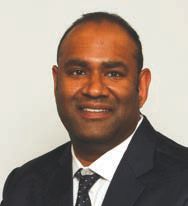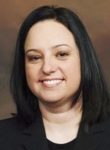
By most accounts, the Canadian primary care optometry practice’s bread and butter is refraction, sprinkled with some management of chronic eye diseases, and the odd acute care case. So, in truth, after such a long period one should expect some degree of monotony. However, how you deal with these feelings may help you progress, expand your footprint, and reinvigorate your passion for the profession.
For me, the COVID pandemic took a lot of the enjoyment out of the practice of optometry. Conversing with patients and exchanging stories during the exam provided me with a constant cultural and culinary education, as well as amazing travel suggestions. Unfortunately, as brevity, sterility and decreased patient interaction became the new norm, I was experiencing increased job dissatisfaction and fatigue.

As the pandemic carried on, I struggled with greater responsibilities and increased concern for the well being of my family, staff and patients. I began to realize I was experiencing some of the signs of burnout. I considered trying to keep my head down and just try to plow through until these feeling passed, but knew in truth, this was not a real solution.
By definition, burnout is a condition experienced by workers and professionals in which aspects of their role or workplace induces stress1. This stress results in manifestations of physical, mental and/or emotional exhaustion. Common signs of burnout in the workplace may include anxiety, headaches, insomnia, fatigue and an increasingly cynical outlook on work and life in general 2,3.

Burnout Can Happen to Anyone at Any Time
There is no defined treatment paradigm for workplace burnout at present. Many people find it helpful to take a leave temporarily, or even permanently. However, identifying the abovementioned signs of burnout and implementing proactive decisions to alter one’s work environment can not only aid in avoiding the symptoms of burnout, but, also open one up to opportunities not previously considered.
Important to realize is that although burnout may be a personal experience it is a community battle. Support from within the workplace, family and friends are integral to overcoming burnout’s depressive cloud. Simply talking to someone about your symptoms or the alternatives you may be considering may help lessen your burden.
Support from Co-workers, Family and Friends is Essential
To avoid burnout myself, the first thing I did was to take a small step away from patient care. I realized that as an optometrist I possessed a narrow academic skill set not easily transferable; however, I also possessed a wealth of life and entrepreneurial experience I could use. I began to think about why I entered the optometric profession, what experiences in my tenure as an optometrist I cherished the most and how I could replicate those experiences. I thought about the personal passions and professional desires I had yet to accomplish or even attempt, and how I may go about doing so.

I spoke to several friends and colleagues and found that my experience of burnout, while unique, was not uncommon. This realization gave me some solace. I continued conversing with colleagues and bounced ideas off friends for alternative career paths within the optometric profession. I had often hired students at my office and enjoyed mentoring them as they learned about eye care.
Many of the students I hired went on to pursue careers in the ophthalmic industry. Realizing the desire to impart my knowledge to others led me to speak to a friend who had been teaching in the Opticianry Program at Seneca College. Luckily there was a need for lab instructors, and I was able to provide myself with some variety and a new set of challenges.
I continued to pursue unique experiences and became involved with a community charity project at Seneca. I continued to speak with my peers and colleagues, and sought input on new experiences and opportunities that may be available. It was during one such exchange I was serendipitously surprised to hear of the opportunity to write the article you are currently reading.
As writing has always been a passion of mine, I pounced on the chance to contribute my take on stagnation and burnout in optometry in the hopes it may assist anyone who needs it and provides some ideas of how one may overcome this common condition.
Work Cited:
1 “Staff Burn-Out” Journal of Social Issues. January 1974
2 “Symptoms of professional burnout: a review of empirical evidence”
APA PsycNET. American Psychological Association. 1998.
3 “Health Impact of ThePsychosocial Hazards of Work: An Overview”
World Health Organisation. 2010

Dr. Shaun Rawana
Dr. Shaun Rawana is a practicing optometrist with over 15 years of experience in both the United States and Canada. His area of focus has been primary care optometry with interests in cornea/ocular surface disease and contact lenses. Dr. Rawana recently began teaching clinical skills in the Opticianry program at Seneca College and looks forward to contributing his insights into the current Canadian scene through Optik.














